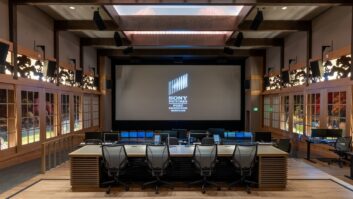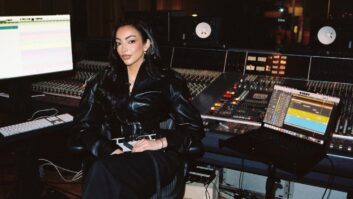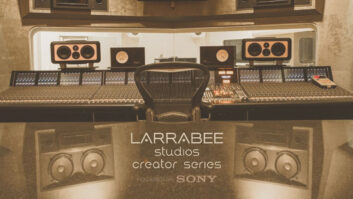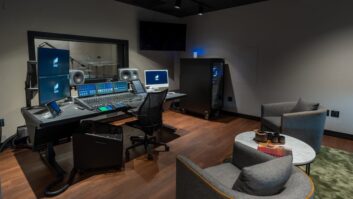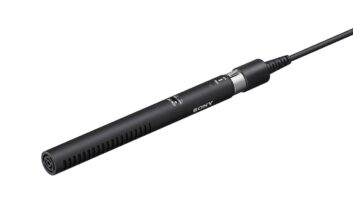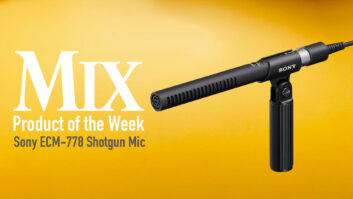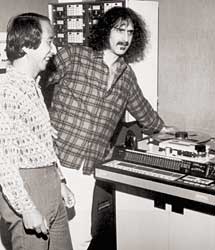
In the late ’70s, Sony launched a program to provide pro users with tools to support the impending consumer digital audio revolution. Toshitada Doi led a team of 30 researchers set on bringing digital to the pro market.
Toshi Doi and Frank Zappa listen to PCM-3324 playbacks.
At the European AES Show in 1978, Sony showed a prototype 1-inch, 24-track digital recorder. It never went into production, but it laid the groundwork for Sony’s popular line of half-inch DASH (Digital Audio Stationary Head) format multitracks.
In 1981, as Mitsubishi began delivering its X-800 digital 32-tracks, Sony countered with its PCM-3324 digital 24-track, which was two years from shipping. The original 44.1/48kHz, 16-bit PCM-3324 weighed 440 pounds, but had a maximum record time of 65 minutes and could easily be synched for 48-track work. Even with its $150,000 price tag, the PCM-3324 found early adopters such as Stevie Wonder, Frank Zappa and remote trucks, and a new industry emerged offering digital rentals.
The DASH spec included other variations such as 2/4/8/16-track decks, yet it was the 24-track machine that gained popularity, especially with each new generation sounding better and costing less. But the real attraction was DASH’s thin-film head technology, which supported double-density tracking so tapes made on a 3324 could be played on the PCM-3348 48-tracks that followed.
